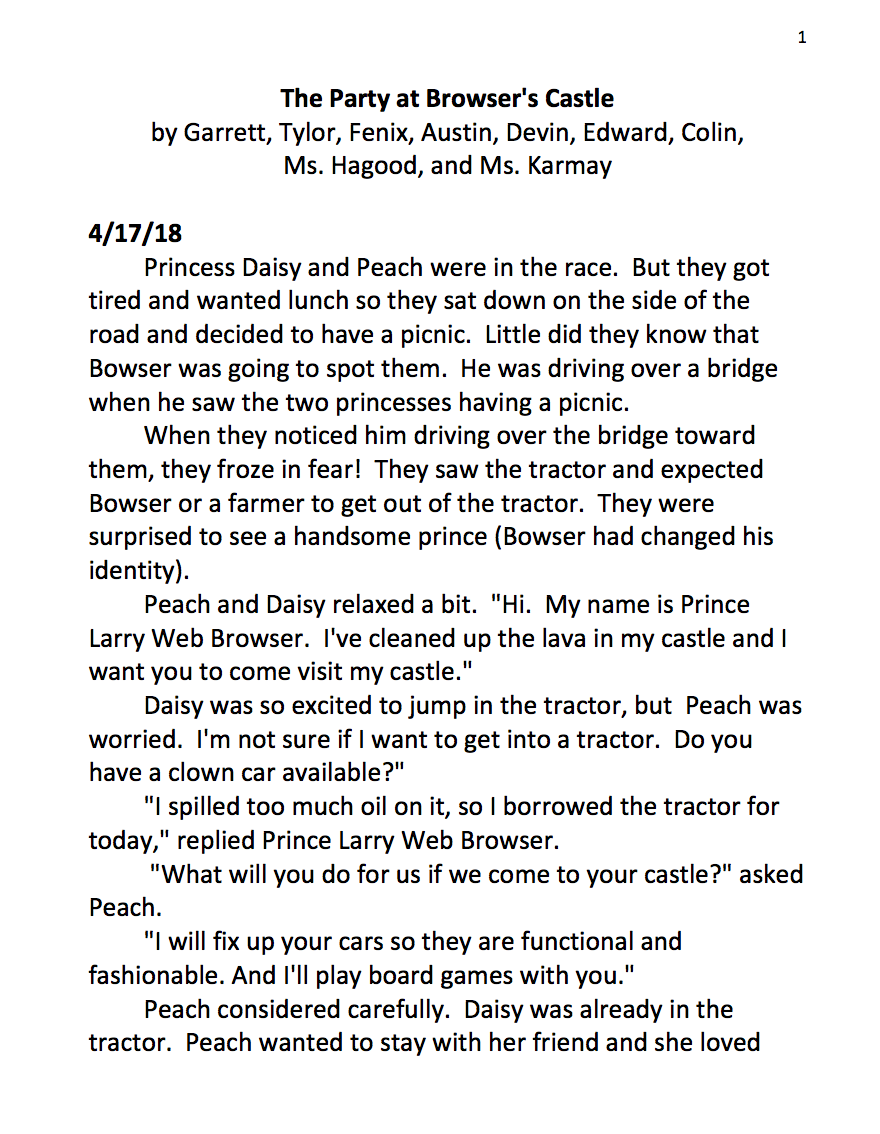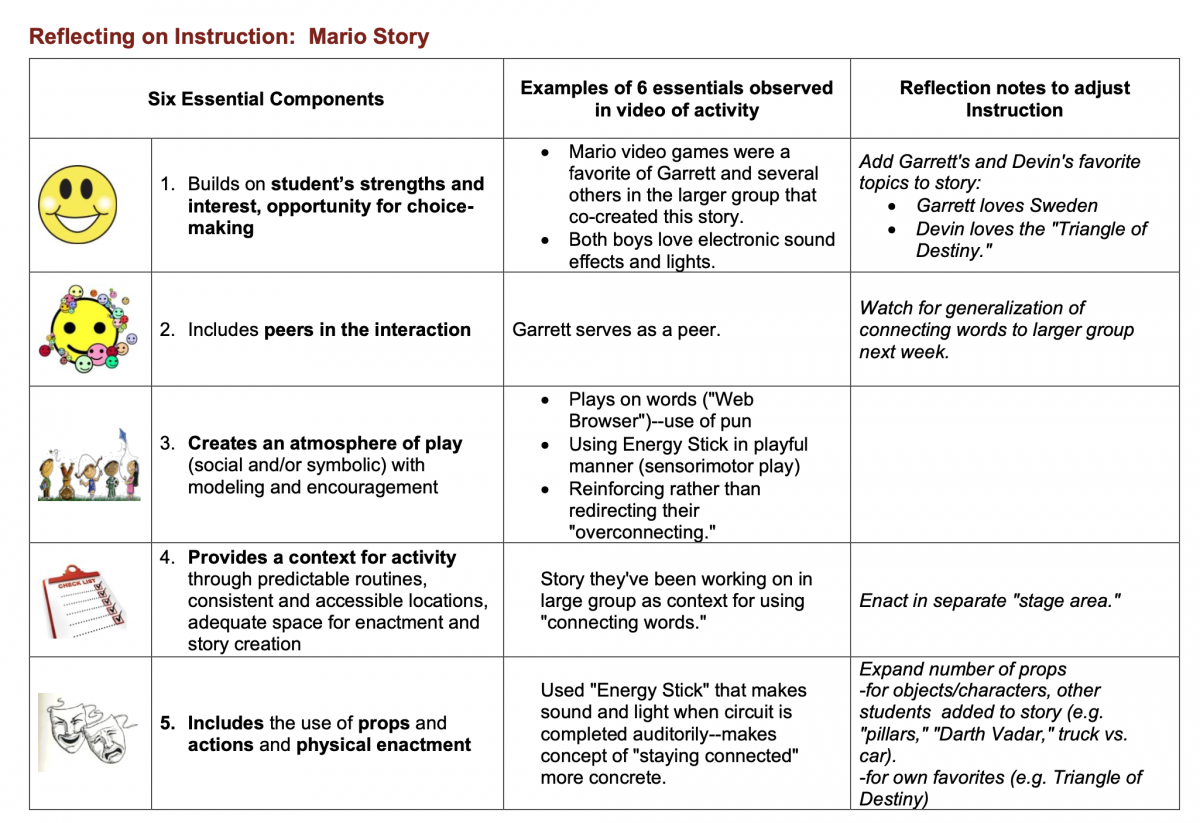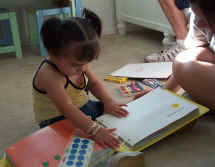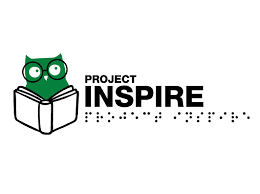This video clip is a follow-up to a similar lesson done in a large group. Both of the students in this clip (Devin and Garrett) benefit from a smaller group and more individualized attention. Both are more actively engaged in this lesson than they were in the larger group session.
It is also important to note that the goals for a particular lesson may change the role of the adult. For example, one of the goals in this lesson was to work on the concept of “connection”, and words that connect us to others. Linda uses an energy stick to reinforce the students whenever a connection is made. As a result, this lesson is more adult-directed than the original co-creation of the original story in the larger group.
Student Background and Goals
Garrett’s Background:
Garrett, age 15 in this video, has very limited vision due to Leber Congenital Amaurosis and associated cone-rod dystrophy. He is considered an auditory learner, with emerging literacy skills in both tactile (braille) and auditory modes, including sound-symbol correspondence, production of rhyming words, sound blending, retelling of simple narratives, and use of context clues to facilitate reading of unfamiliar braille words. Garrett has special interests in geography and foreign languages; Sweden, Finland and Norway are his current favorite countries. He is also very interested in the concepts of Romance and Love, and desperately wants to have his own girlfriend. He has some congenital motor coordination problems (has been considered for a diagnosis of cerebral palsy). He is beginning to learn to control his rocking and extraneous hand movements; however, he continues to need reminders about how these movements appear to others. Garrett is generally accepted by peers, although he is not included as a full social participant and friend in the regular high school social groups at the school for the blind. He has difficulty with organizing language to retell complex narratives, give reasons or causes, to justify a position or opinion, and with acknowledging others’ ideas and blending them into a conversation or story
Garrett’s Goals:
- Retell a complex narrative that he has co-created with peers, including identifying referents for pronouns, sequencing and organizing actions.
- Use prosocial language to connect his ideas to those of a partner.
Devin’s Background:
Devin is 12 years old, and has low vision due to optic nerve hypoplasia. He communicates using spoken language, and has extremely strong auditory memory skills. He is able to recall narratives verbatim if he has heard them only once or twice, and this skill is enhanced if he hears the information in electronic form (e.g. recorded or on voice-over or screen reader). He is especially motivated by electronic voices, such as the custom voices on the Macintosh computer, and loves to listen to stories we’ve written together when they are read back by those voices. Devin loves activities that violate verbal expectations, such as Mad Libs, and also loves word play such as Pig Latin or making up nonsense words. He is challenged in the area of social communication, often interrupting others or engaging in off-topic conversation about silly, playful topics that may not be appropriate to the situation (e.g. making fart noises, repeatedly mimicking or requesting a specific activity such as writing silly song lyrics). He seems to thrive on adult attention, and peers are often frustrated by his off topic or immature communications. He has the most difficulty in group situations, in which he needs to share adult input or wait his turn.
Devin’s Goals:
- Use prosocial language (e.g.”connecting words”) to maintain an interaction with partners. I would like for Devin to answer questions about the story, and to use words such as “good idea!,” “me too,” “yes, and also….,” “that reminds me,” “I agree,” “You made me laugh when you said_____” to help him stay engaged in a small group or dyad.
- Wait until there is a pause in the conversation as a cue to take his turn.
Video Context
This video is a follow-up to a larger group activity earlier in the week, in which seven students worked to co-create a story that included Mario characters. Neither Garrett nor Devin had much knowledge of the Mario video game, and their participation in story co-creation had been either minimal (Garrett), or off-topic and inappropriate (Devin). In this follow-up session, I was teaching the students to use prosocial language to maintain their participation with peers who might unintentionally exclude them from the activity. I also wanted to check Devin and Garrett’s recall and comprehension of the story that was developed in the larger group context. Finally, I wanted for Devin and Garrett to find a way to weave their special interests (Triangle of Destiny, Romance, Sweden), and to give them a chance to engage in use of props and enactment to enhance their comprehension. You can read the segment that they added in the written story segment dated 4/24/18.




